Welcome to the Amira-Avizo Software Use Case Gallery
Below you will find a collection of use cases of our 3D data visualization and analysis software. These use cases include scientific publications, articles, papers, posters, presentations or even videos that show how Amira-Avizo Software is used to address various scientific and industrial research topics.
Use the Domain selector to filter by main application area, and use the Search box to enter keywords related to specific topics you are interested in.
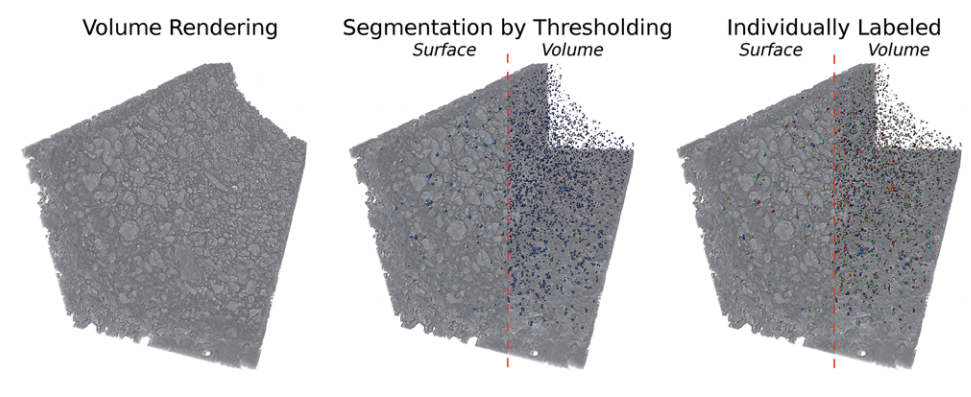
Aging of a Pt/Al2O3 exhaust gas catalyst monitored by quasi in situ X-ray micro computed tomography
Catalyst aging effects were analyzed using X-ray absorption micro-computed tomography in combination with conventional characterization methods on various length scales ranging from nm to μm to gain insight into deactivation mechanisms.
For this purpose, a 4 wt% Pt/Al2O3 model exhaust gas catalyst was coated on a cordierite honeycomb and subjected to sequential thermal aging in static air at 950 °C for 4, 8, 12 and 24 hours. The ag... Read more
Georg Hofmann, Amélie Rochet, Elen Ogel, Maria Casapu, Stephan Ritter, Malte Ogurreck and Jan-Dierk Grunwaldt
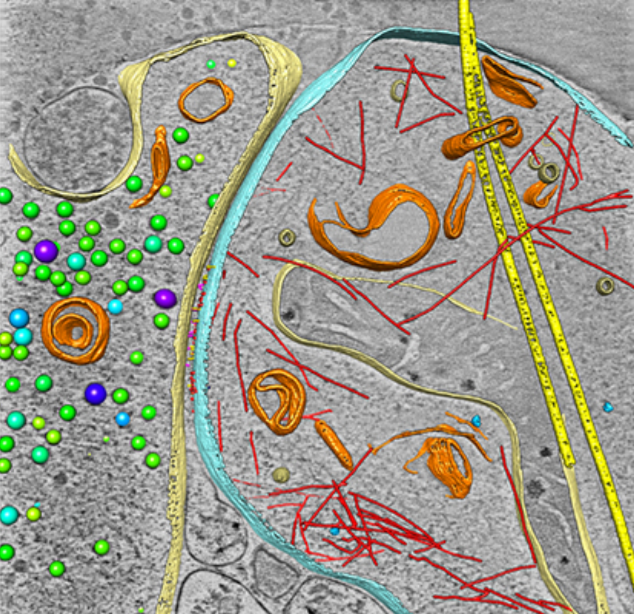
As key functional units in neural circuits, different types of neuronal synapses play distinct roles in brain information processing, learning, and memory. Synaptic abnormalities are believed to underlie various neurological and psychiatric disorders. Here, by combining cryo-electron tomography and cryo-correlative light and electron microscopy, we distinguished intact excitatory and inhibitory synapses of cultured hippocampal neurons, and visualized the in situ 3D organization of ... Read more
Chang-Lu Tao, Yun-Tao Liu, Rong Sun, Bin Zhang, Lei Qi, Sakar Shivakoti, Chong-Li Tian, Peijun Zhang, Pak-Ming Lau, Z. Hong Zhou and Guo-Qiang Bi
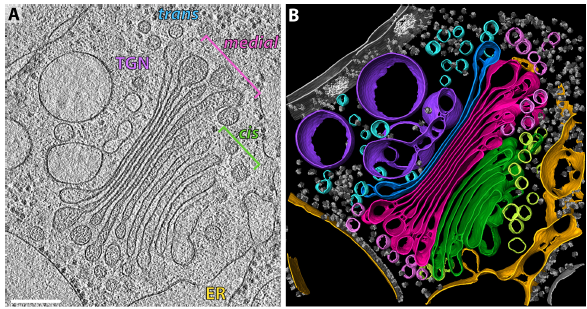
The structure of the COPI coat determined within the cell
COPI-coated vesicles mediate trafficking within the Golgi apparatus and from the Golgi to the endoplasmic reticulum. Here, we applied cryo-focused ion beam milling, cryo-electron tomography and subtomogram averaging to determine the native structure of the COPI coat within vitrified Chlamydomonas reinhardtii cells. The native algal structure resembles the in vitro mammalian structure, but additionally reveals cargo bound beneath beta’–COP. We find that all coat components disassemble... Read more
Yury S Bykov, Miroslava Schaffer, Svetlana O Dodonova, Sahradha Albert, Jurgen M Plitzko, Wolfgang Baumeister, Benjamin D Engel, John AG Briggs
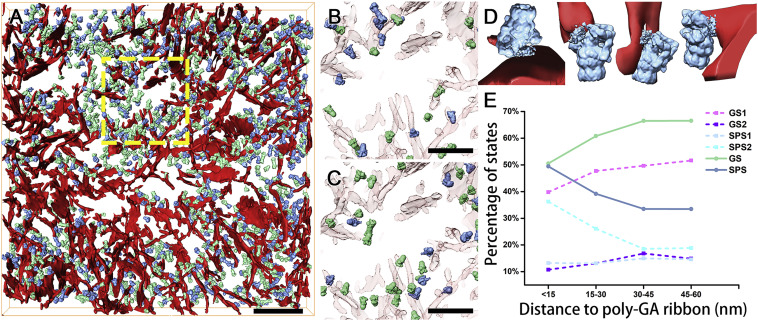
In Situ Structure of Neuronal C9orf72 Poly-GA Aggregates Reveals Proteasome Recruitment
Protein aggregation and dysfunction of the ubiquitin-proteasome system are hallmarks of many neurodegenerative diseases. Here, we address the elusive link between these phenomena by employing cryo-electron tomography to dissect the molecular architecture of protein aggregates within intact neurons at high resolution. We focus on the poly-Gly-Ala (poly-GA) aggregates resulting from aberrant translation of an expanded GGGGCC repeat in C9orf72, the most common genetic cause of amyotrophic latera... Read more
Qiang Guo, Carina Lehmer, Antonio Martinez-Sanchez, Till Rudack, Florian Beck, Hannelore Hartmann, Manuela Perez-Berlanga, Frederic Frottin, Mark S.Hipp, F. Ulrich Hartl, Dieter Edbauer, Wolfgang Baumeister, Ruben Fernandez-Busnadiego
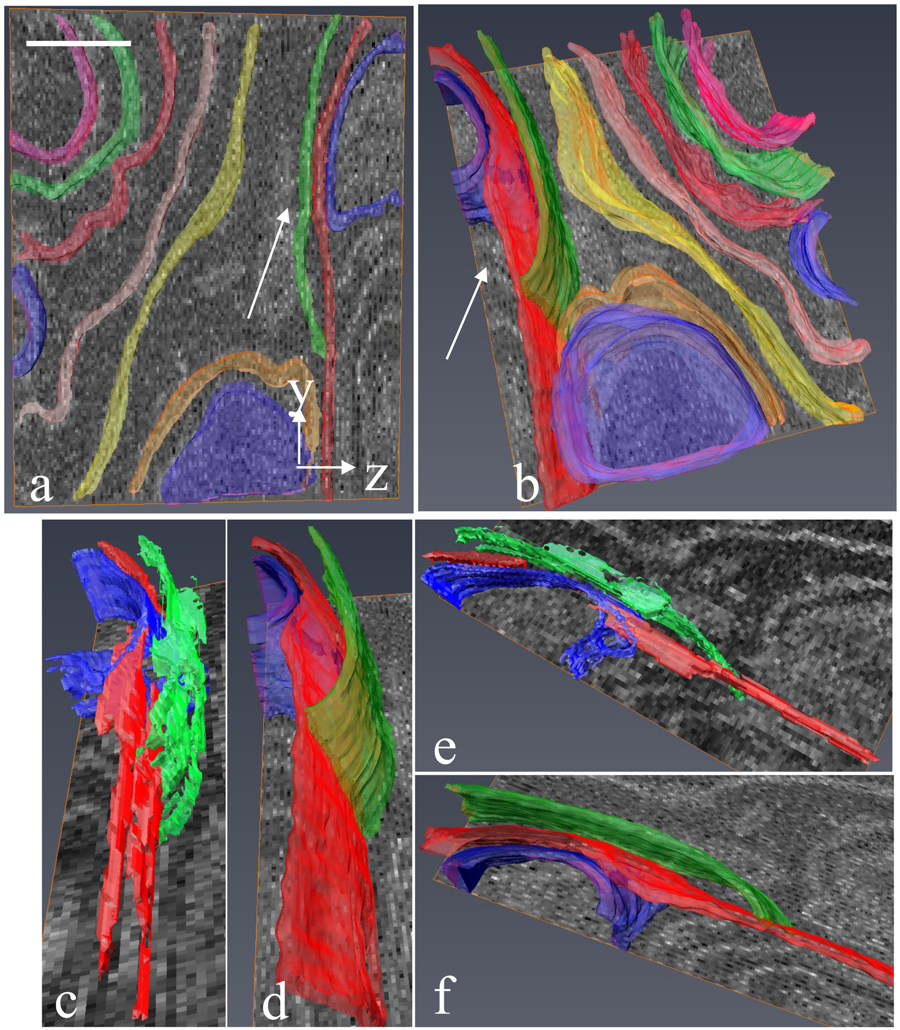
Serial block-face electron microscopy (SBEM) provides nanoscale 3D ultrastructure of embedded and stained cells and tissues in volumes of up to 107 µm3. In SBEM, electrons with 1–3 keV energies are incident on a specimen block, from which backscattered electron (BSE) images are collected with x, y resolution of 5–10 nm in the block-face plane, and successive layers are removed by an in situ ultramicrotome. Sp... Read more
Q. He, M. Hsueh, G. Zhang, D. C. Joy & R. D. Leapman
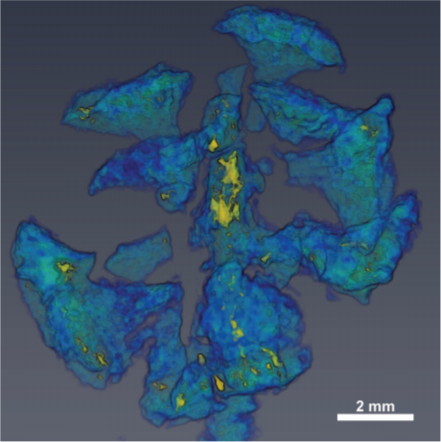
Computed tomography is an increasingly popular technique for the non-destructive study of fossils. Whilst the science of X-ray computed tomography (CT) has greatly matured since its first fossil applications in the early 1980s, the applications and limitations of neutron tomography (NT) remain relatively unexplored in palaeontology. These highest resolution neutron tomographic scans in palaeontology to date were conducted on a specimen of Austrosequoia novae-zeelandiae (Ettingshausen) Mays an... Read more
Chris Mays, Joseph J. Bevitt, and Jeffrey D. Stilwell
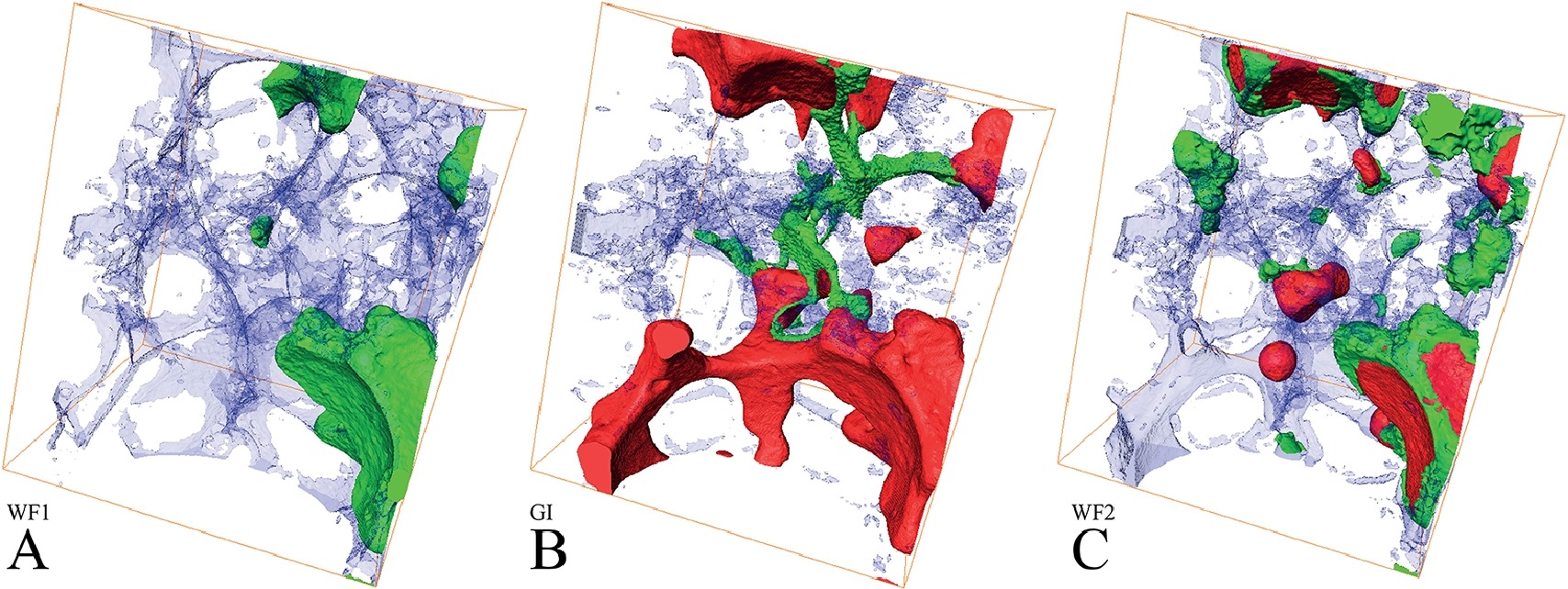
X-ray micro-tomography is used to image the pore-scale configurations of fluid in a rock saturated with three phases – brine, oil and gas – mimicking a subsurface reservoir, at high pressure and temperature. We determine pore occupancy during a displacement sequence that involves waterflooding, gas injection and water re-injection. In the water-wet sample considered, brine occupied the smallest pores, gas the biggest, while oil occupied pores of intermediate size and is displaced ... Read more
Alessio Scanziani, Kamaljit Singh, Tom Bultreys, Branko Bijeljic, Martin J. Blunt
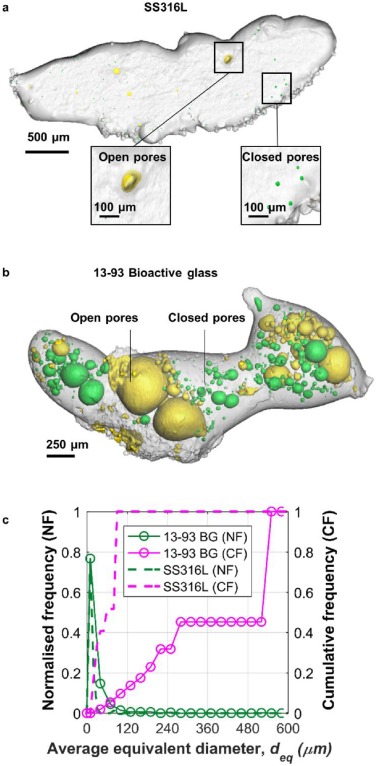
Laser-matter interactions in laser additive manufacturing (LAM) occur on short time scales (10-6 – 10-3 s) and have traditionally proven difficult to characterise. We investigate these interactions during LAM of stainless steel (SS316 L) and 13-93 bioactive glass powders using a custom built LAM process replicator (LAMPR) with in situ and operando synchrotron X-ray radiography. This reveals a range of melt track solidification phenomena as... Read more
Chu Lun Alex Leung, Sebastian Marussi, Michael Towrie, Jesus del Val Garcia, Robert C. Atwood, Andrew J. Bodey, Julian R. Jones, Philip J. Withers, Peter D.Lee
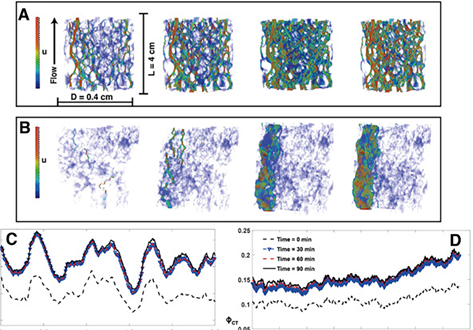
We have experimentally investigated the impact of heterogeneity on the dissolution of two limestones, characterised by distinct degrees of flow heterogeneity at both the pore and core scales. The two rocks were reacted with reservoir-condition CO2-saturated brine at both scales and scanned dynamically during dissolution. First, 1 cm long 4 mm... Read more
Menke H.P; Reynolds C.A.; Andrew M.G.; Pereira Nunes J.P.; Bijeljic B; Blunt M.J.
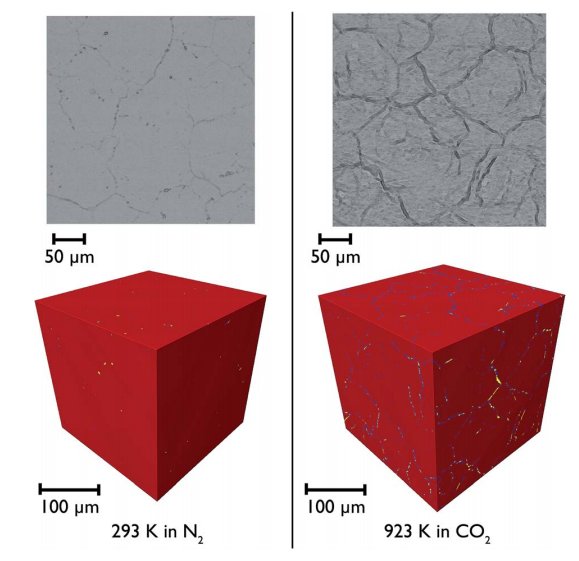
In situ studies of materials for high temperature CO2 capture and storage
Carbon capture and storage (CCS) offers a possible solution to curb the CO2 emissions from stationary sources in the coming decades, considering the delays in shifting energy generation to carbon neutral sources such as wind, solar and biomass.
The most mature technology for post-combustion capture uses a liquid sorbent, amine scrubbing. However, with the existing technology, a large amount of heat is required for the regeneration of the liquid sorbent, which... Read more
Matthew T. Dunstan, Serena A. Maugeri, Wen Liu, Matthew G. Tucker, Oluwadamilola O. Taiwo, Belen Gonzalez, Phoebe K. Allan, Michael W. Gaultois, Paul R. Shearing, David A. Keen, Anthony E. Phillips, Martin T. Dove, Stuart A. Scott, John S. Dennish and Clare P. Grey
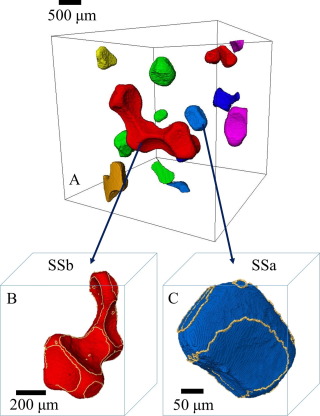
Multiphase flow in porous media is strongly influenced by the wettability of the system, which affects the arrangement of the interfaces of different phases residing in the pores.
We present a method for estimating the effective contact angle, which quantifies the wettability and controls the local capillary pressure within the complex pore space of natural rock samples, based on the physical constraint of constant curvature of the interface between two fluids. This algorithm is ... Read more
Alessio Scanziani, Kamaljit Singh, Martin J. Blunt, Alberto Guadagnini

The terrestrial Judith River Formation of northern Montana was deposited over an approximately 4 Myr interval during the Campanian (Late Cretaceous). Despite having been prospected and collected continuously by palaeontologists for over a century, few relatively complete dinosaur skeletons have been recovered from this unit to date. Here we describe a new genus and species of ankylosaurine dinosaur, Zuul crurivastator, from the Coal Ridge Member of the Judith River Formation, based ... Read more
Victoria M. Arbour, David C. Evans
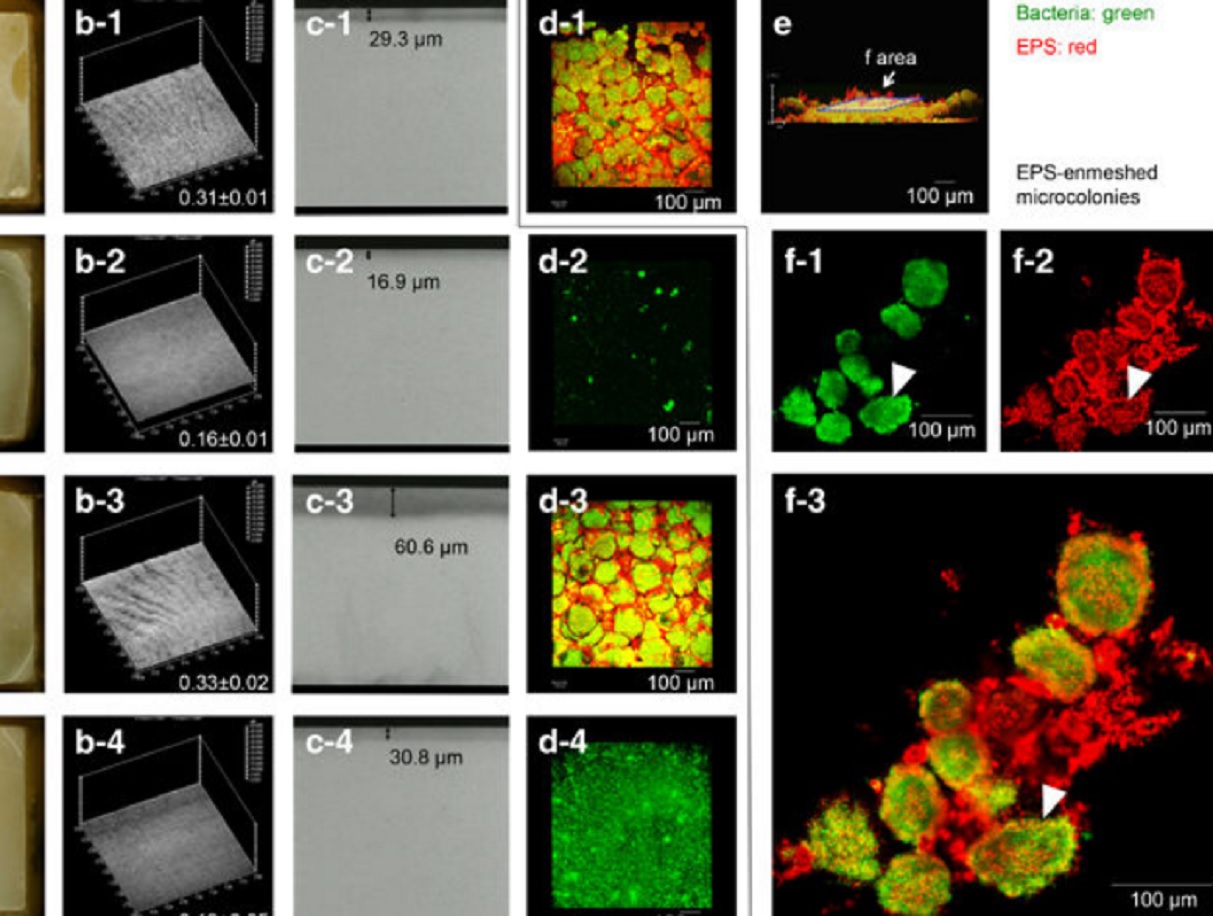
Acidic microenvironments created by bacterial clusters thriving in a polysaccharide matrix could be behind localized tooth decay. Jin Xiao of the University of Rochester Medical Center and Geelsu Hwang of the University of Pennsylvania with colleagues in the US mapped acidity changes across tooth enamel caused by the microstructure of dental plaque: a film of bacteria and the polysaccharide matrix they secrete. Using fluorescence microscopy, they studied the 3D architecture of plaque that for... Read more
Jin Xiao, Anderson T Hara, Dongyeop Kim, Domenick T Zero, Hyun Koo et al.
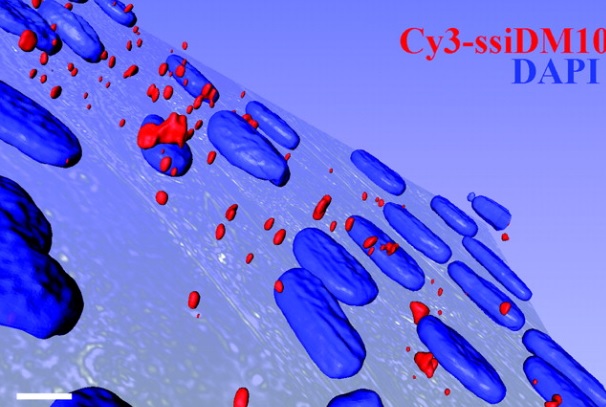
This paper demonstrates for the first time down-regulation of the endogenous nuclear retained mutant DMPK mRNAs targeted with lentivirus-delivered short hairpin RNAs (shRNAs). This nuclear RNAi(-like) phenomenon was not observed when synthetic siRNAs were delivered by cationic lipids, suggesting either a link between processing of the shRNA and nuclear import or a separate pathway for processing shRNAs in the nuclei.
Read more
Marc-André Langlois, Christelle Boniface, Gang Wang, Jessica Alluin, Paul M. Salvaterra, Jack Puymirat, John J. Rossi, Nan Sook Lee